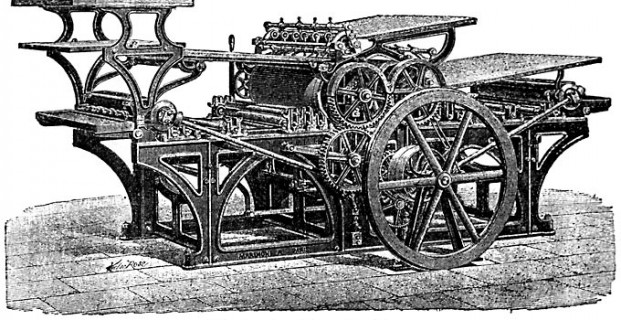If the goals you have set out for yourself with your publishing project can be met entirely through producing printed books, the economics of decision-making are fairly straightforward.
For instance, if your books(s) are the product underlying a money-making enterprise, and you have a means of getting those books into the hands of customers (by selling quick reference guides directly to businesses, for example, or forcing employees to purchase your autobiography), then the financial goal of profitability can best be met by producing that product at the lowest possible unit cost.
Any strategy that involves print runs of thousands vs. hundreds of copies points towards shopping production of your book among the widest range of printers – both domestic and international. In some cases, it’s worth trading a few profit percentage points for convenience (by working with a local print shop, for example, rather than having to ship proofs via overnight delivery services). But if you think you have a plan and distribution mechanism in place to move thousands of copies, you owe it to your bottom line to explore options beyond “full service” short-run alternatives.
Now if you goals are tied to having less than thousands of books on hand (for instance, having a few hundred printed copies to sell at community fairs or hand out at family reunions), then the short-run publishing services I mentioned last time are probably your best bet. Lulu, for example, can help you create a wide variety of book types from standard-size paperbacks, to glossy hardcovers featuring quality photos, to calendars and other novelty formats.
Unit pricing from such services is going to be higher than the cost-per-book you’d get from shopping 1000+ print runs to multiple services. But not everyone has a book (or a goal) that’s worth the risk of ending up with a basement full of unsold copies that were produced at a low unit cost but never paid for themselves by generated revenue.
Both the long- and short-run options described above are just about getting those books delivered to your front door, with the assumption that you already have a mechanism for getting them into people’s hands. But if you’re looking for distribution as well as production of a print book, then the Amazon ecosystem (which currently moves more than half the books sold in the country) is your best (and, as it turns out, least inexpensive) choice.
Amazon’s short-run print service, called CreateSpace, is print-on-demand, meaning no books are produced until someone (including you) order them. This saves you and Amazon from having to hold inventory. In fact, it saves you from having to spend anything up front to get your book into production.
The downside? Well most long- and short-run services provide you more book format options than does CreateSpace. And print-on-demand (like other short-run processes) gives you a book that is just a little shy of traditional typeset quality. But, considering that CreateSpace is the easiest method for both producing your print book and making it an item in the world’s largest distribution network, those shortcomings might seem like acceptable trade-offs.
I should also note that even if you are just producing a few dozen books to hand out to friends, CreateSpace might still be your most economical alternative. For example, Critical Voter (which is about 250 pages in a conventional 6×9 paperback format) would cost me $6 a copy to product with Lulu, but only $4 with CreateSpace.
This is because CreateSpace/Amazon make their real money when someone other than you buys the book. For instance, if anyone purchases the print edition of Critical Voter from Amazon at the retail price of $9.99, my cut is $2 while Amazon’s gets to keep the other $8. If that division seems unfair, compare it to royalty rates from traditional publishers that tend to hover around 8-12%.
Now your options become more interesting once ebooks (where Amazon has significant competition) come into the mix. And it is to this subject that we’ll turn to next.

